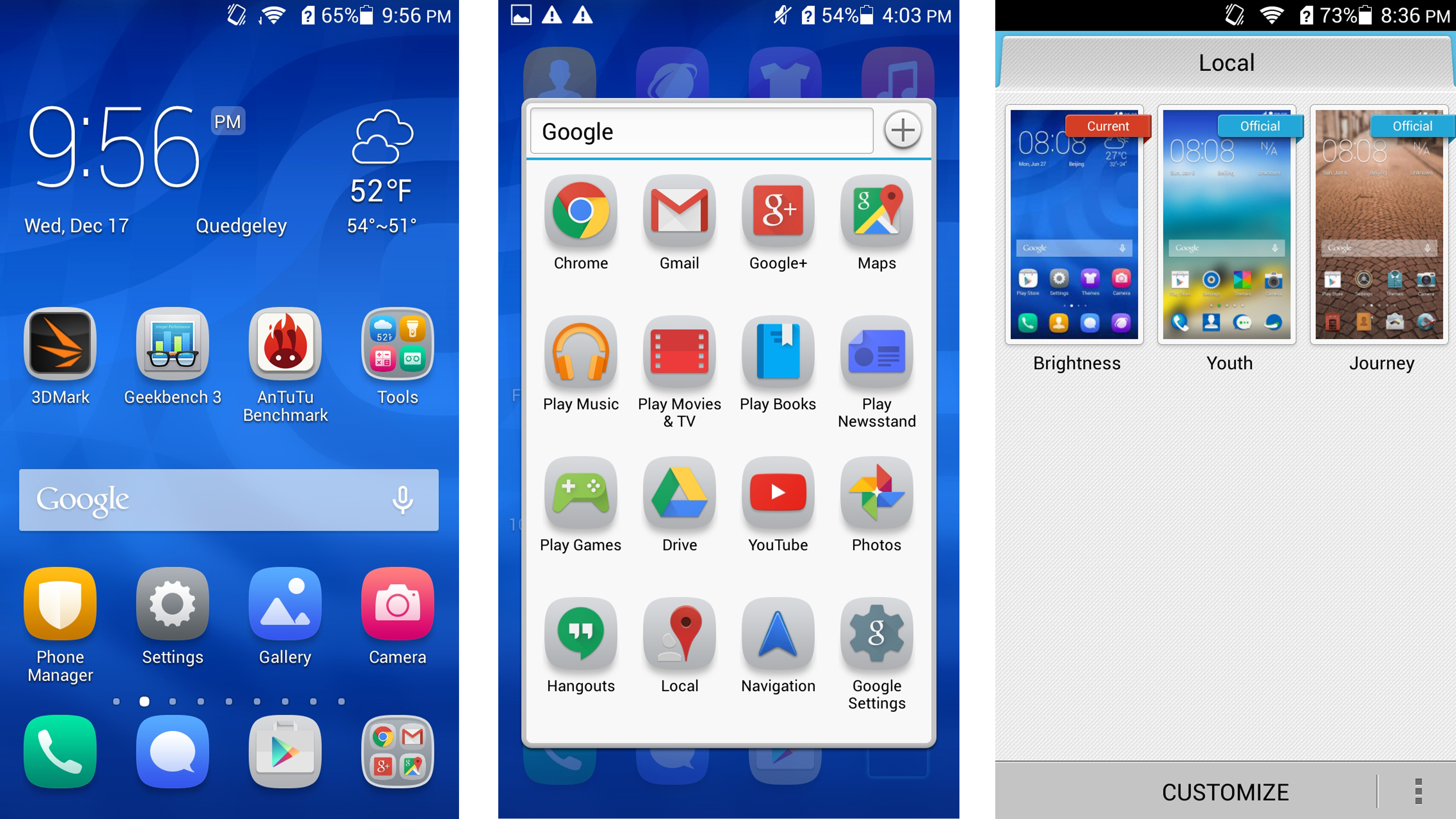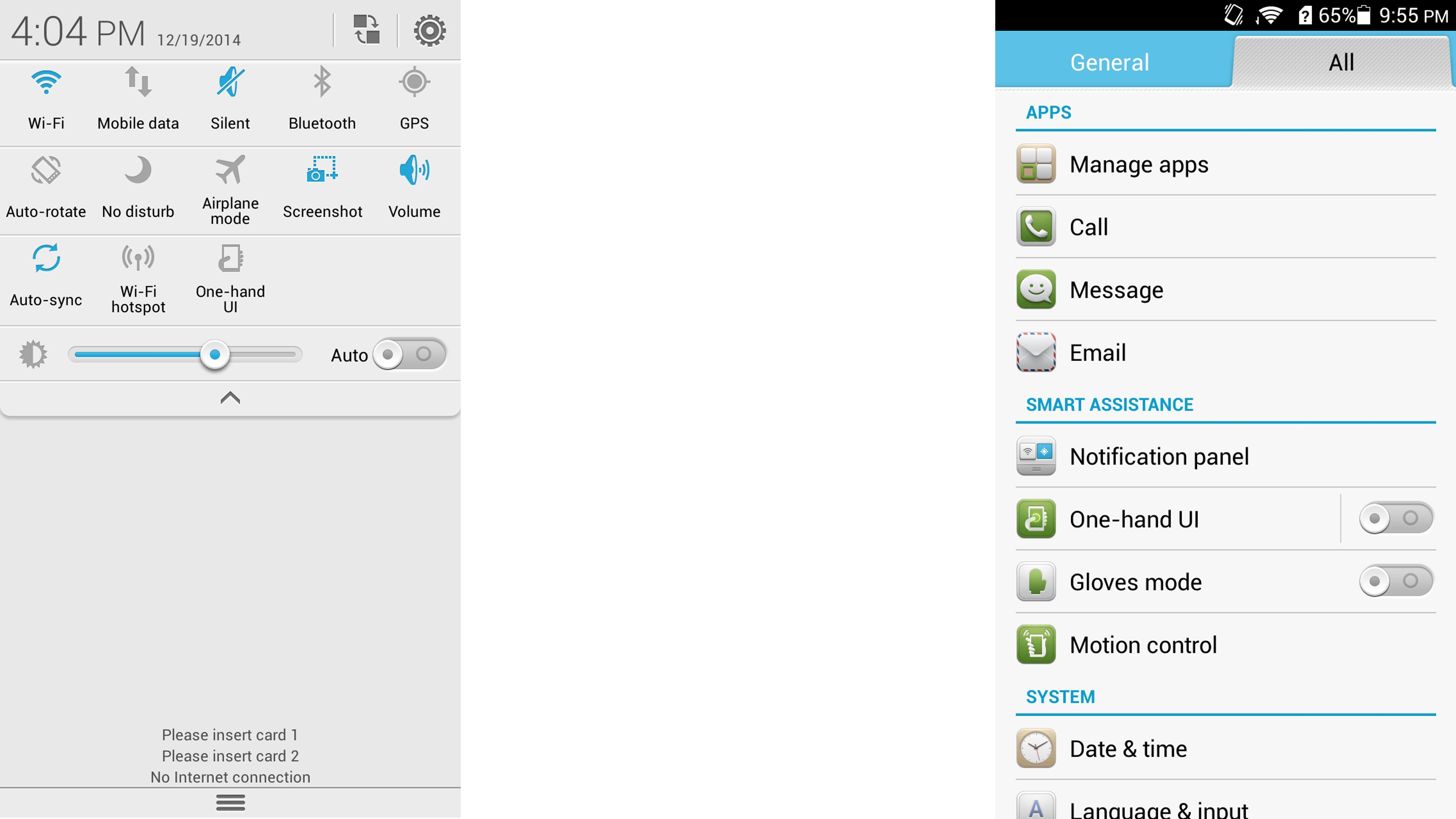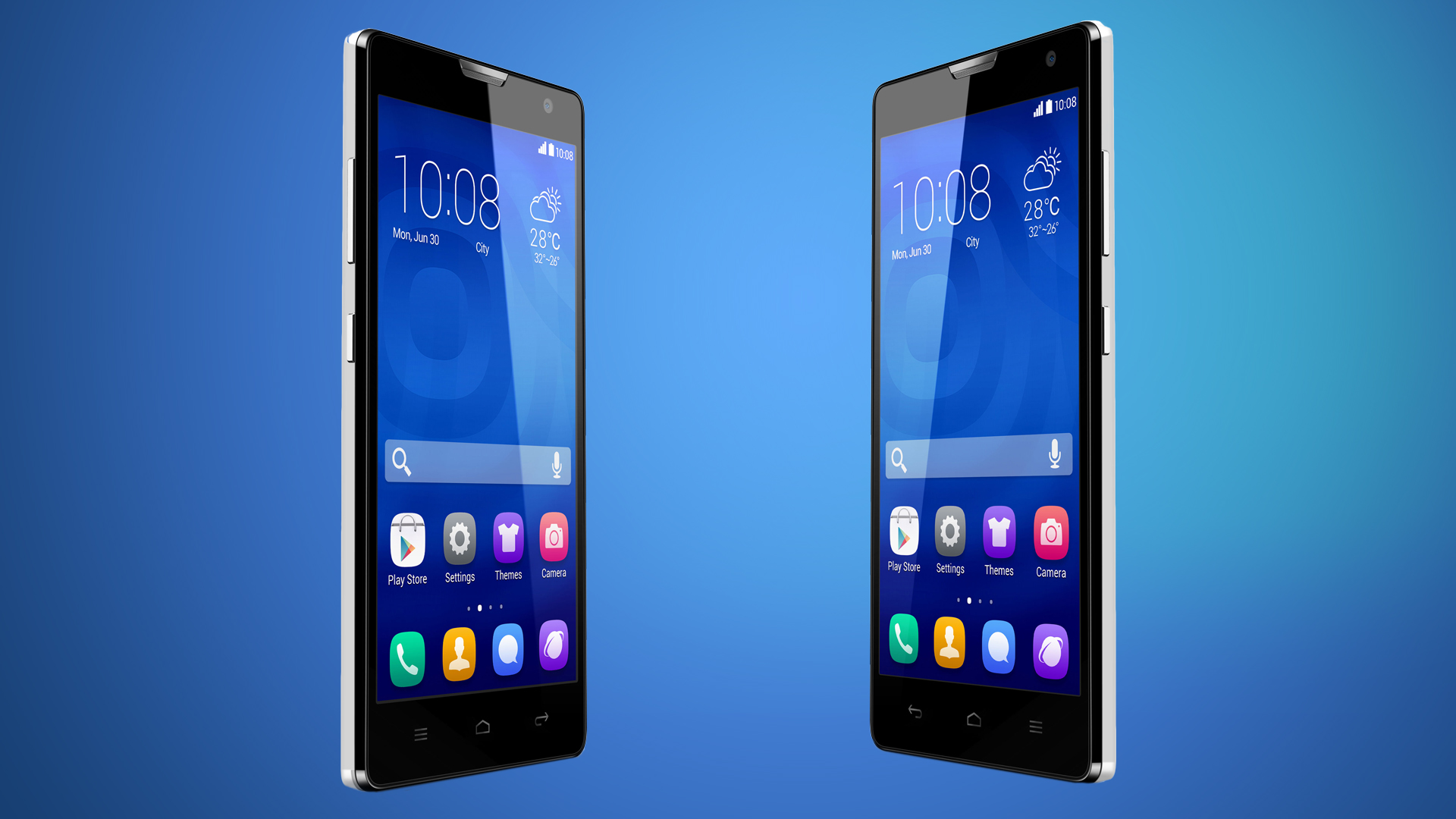Why you can trust TechRadar
Beyond the respectable array of specifications I've already looked at, there's very little else of note on the Honor 3C, but what more would you expect for the low, low price of £110?
One little extra that is a staple of east Asian smartphones is the dual SIM capability that Europe has rarely seen in other handsets apart from the similarly specced Acer Liquid Jade. This feature means you can have a primary 3G microSIM (note: no 4G support here), and a secondary 2G micro SIM.
Having this functionality means you can operate the Honor 3C simultaneously as a personal and business phone. While this may be handy for some, you'll have to be careful when making and receiving calls and SMS messages - after all, you don't want to answer a call to your boss with a greeting you should have probably reserved for your partner.
A seemingly minor feature that's also been transported over from the more pricey Huawei Ascend P7 is the 'gloves mode'. This handy little option allows you to jab and swipe away at the touchscreen wearing gloves.
Interface
While Android marches on with the 5th iteration of its operating system, Lollipop, some handsets are still launching with earlier versions of Android. The Honor 3C suffers from this frustrating fragmentation, coming pre-loaded with Android 4.2.2 Jelly Bean - an operating system that's now approaching two years old.
Why Huawei decided to stick with this older OS probably comes down to two main reasons; firstly it means the firm has had to expend a minimal amount on software development for this handset, and secondly, it's probably happy with the speed, compatibility and stability the Emotion 2.0 skin maintains.
Don't get me wrong, for an average user - particularly the kind of buyer looking for a budget smartphone, this earlier version of Android will provide the vast majority of functionality that they will need - for now. Unfortunately, it means they are missing out on some of the latest updates to Google apps, and other little treats such as Android Wear compatibility.
Sign up for breaking news, reviews, opinion, top tech deals, and more.

Huawei's stuck with the second version of its 'Emotion' UI - the same found on the Huawei Ascend Mate 7, but with this skin laden over Android, Huawei will unfortunately divide opinion of anyone who decides to give the Honor 3C a go.
For Android purists, it's a rather gimmicky take on Google's OS, with the standard theme featuring some rather peculiar UI design alterations that in some ways make it feel more like Apple's iOS rather than Android - especially the brightly coloured gradient-heavy app icons.
You can change the theme (and icons) should you wish, with a 'Youth' theme clearly aimed at younger users, while the 'Journey' theme takes skeuomorphism to the extreme - British red telephone boxes and all.
If, however, you're looking for simple the proprietary skin delivers, and even has a special 'Simple Home' launcher that replaces the home screen with three pages of 'tiles' that has some limited customisation options. Useful for a smartphone beginner, perhaps, but most will be unlikely to favour it.

Using the standard launcher, the first thing you'll notice is that the app drawer has been removed in favour of all your icons living directly on one of the home screens. This means you'll end up with page after page of icons that you have to manually sort into an order of your preference.
To cater for the pages of app icons you'll accumulate, Huawei has bumped the number of available homescreens from five up to nine, though I wouldn't be particularly optimistic that the UI would remain smooth with nine full pages of widgets, folders and icons.
The Honor 3C comes pre-loaded with a few awful Gameloft games and some thirdparty apps in the form of Bitcasa's cloud storage app and the Kingsoft Office suite for editing and viewing documents. There's also a number of Huawei's own tools installed, such as a flashlight, sound recorder, FM radio and a DLNA streaming app.
Performance
With a Mediatek A7 quad-core processor, the Honor 3C is no powerhouse, but surprisingly isn't all that laggy. Each core is clocked at 1.3GHz, and is coupled with a perfectly sufficient 2GB of RAM.
Video performance is kept in check with a Mali-400MP2 GPU, the same processor found in a range of relatively unknown smartphones from the Far East by Lenovo, Xolo and Micromax.
Despite a lack of pedigree, the Honor 3C comfortably copes with playing back HD video, and recording 1080p video via the 8MP camera.

Swiping through homescreens and opening folders is snappy - just be careful not to overload the pages with too many widgets, as things start to slow rather quickly.
How do the Honor 3C's specifications translate into real world performance? To find out, I ran it through Geekbench 3 - a multi-talented benchmark program capable of comparing performance. After averaging out the scores of three tests, the quad-core processor achieved a rather lowly multi-core score of 1170 - well under half the performance of the LG G3. The single-core score of 353 is equally disappointing - yet unsurprising given the low clock speed.
If you're only using the more simple functions of the smartphone, you can eke out additional battery life using the inbuilt Power Saving settings menu. The 'Power Monitoring' sub-menu allows you to automatically optimise the power consumption by changing settings to a recommended setup.
While the Honor 3C is no superphone, it's got just about enough guts to work through social media, video, music and games without too much drama.
Current page: Key features, interface and performance
Prev Page Introduction and design Next Page Battery life, the essentials and camera